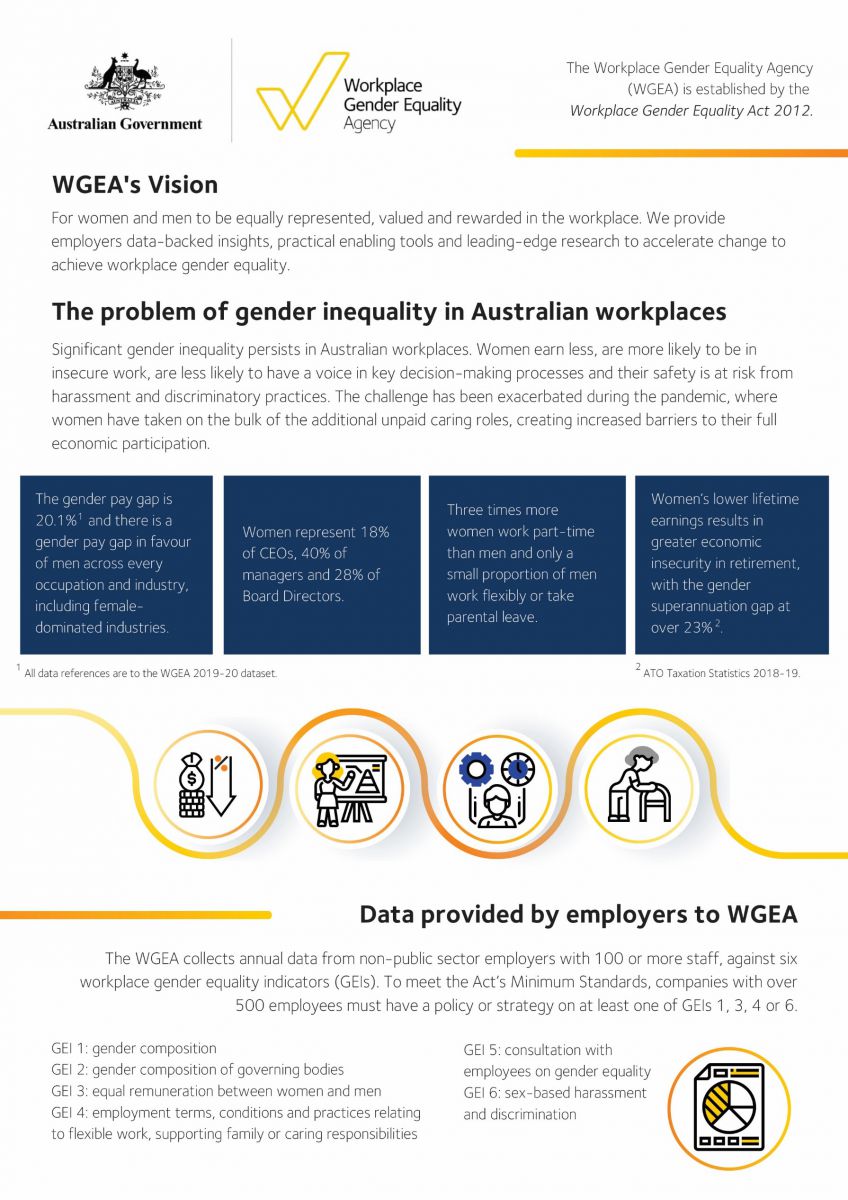Established by the Workplace Gender Equality Act 2012 (Workplace Gender Equality Act), the Workplace Gender Equality Agency (WGEA) manages a reporting program, in which non-public sector employers with 100 or more employees (‘relevant employers’) report to WGEA against six gender equality indicators (GEIs) on an annual basis. The resulting eight-year gender equality dataset is considered world-leading. How WGEA supports employers to improve gender equality outcomes is shown in figure 2.
WGEA works with employers to help them comply with their reporting requirements under the Workplace Gender Equality Act. This reporting framework aims to highlight measures that employers can focus on to improve workplace gender equality outcomes. WGEA provides advice, practical tools and education to employers to help them improve their gender performance including through the assessment and measurement of gender equality data. The Data Explorer, published on the website, releases all workplace gender equality data collected (excluding remuneration) and enables the public to access and analyse overall, industry and individual company performance.
WGEA also works with employers, business, industry and professional associations, academics and researchers, equal opportunity networks and women’s groups promoting and contributing to understanding, acceptance and public discussion of gender equality in the Australian workplace.
WGEA undertakes research and analysis on a range of issues relevant to workplace gender equality, often in partnership with other organisations. WGEA releases information on the gender pay gap, including the gender pay gap which is calculated from their data. Unlike the national gender pay gap, WGEA’s total remuneration gender pay gap covers full-time total earnings and is currently at 20.1 per cent. WGEA also calculates the national gender pay gap using ABS data. For more on the gender pay gap, see WGEA’s Fact Sheet, Australia’s Gender Pay Gap Statistics at Appendix 6.
WGEA promotes best practice through the Employer of Choice for Gender Equality citation and Pay Equity Ambassadors. It also provides information on key topics such as parental leave, flexible work and procurement policies.
The Director of WGEA is a core member of the newly established Respect@Work Council. The Council brings together leaders from key government regulators and policy makers responsible for sexual harassment policies and complaints to improve coordination, consistency and clarity across existing legal and regulatory framework. More information is available at: https://www.ag.gov.au/rights-and-protections/human-rights-and-anti-discrimination/respect-at-work/council.
Figure 2 – How WGEA supports employers improve gender equality outcomes


